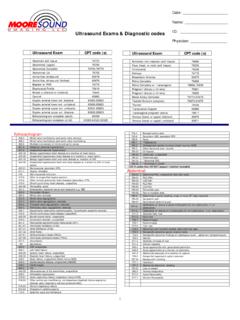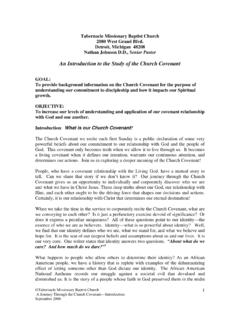Transcription of PROFESSIONAL DIGITAL TWO-WAY RADIO MOTOTRBO ... - …
1 PROFESSIONAL DIGITAL TWO-WAY RADIOMOTOTRBO DP4400/DP4401 NON-DISPLAY PORTABLEUSER GUIDEENFRITESDEPLRUARTUC ontentsEnglishiContentsThis User Guide contains all the information you need to use the MOTOTRBO Series Safety Information .. ivProduct Safety and RF Exposure Compliance ..ivSoftware Version .. ivComputer Software Copyrights .. vHandling Precautions .. viGetting Started .. 1 How to Use This Guide .. 1 What Your Dealer/System Administrator Can Tell You .. 1 Preparing Your RADIO for Use .. 2 Charging the Battery .. 2 Attaching the Battery .. 3 Attaching the Antenna .. 3 Attaching the Belt Clip .. 4 Attaching the Universal Connector Cover (Dust Cover) .. 4 Powering Up the RADIO .. 5 Adjusting the Volume .. 5 Identifying RADIO Controls .. 6 RADIO Controls .. 6 Programmable Buttons .. 7 Assignable RADIO Functions .. 7 Assignable Settings or Utility Functions .. 8 Push-To-Talk (PTT) Button .. 8 Switching Between Conventional Analog and DIGITAL Mode.
2 9IP Site Connect .. 10 Capacity Plus .. 10 Linked Capacity Plus .. 11 Identifying Status Indicators .. 12 LED Indicator .. 12 Indicator Tones .. 13 Audio Tones .. 13 Receiving and Making Calls .. 14 Selecting a Zone .. 14 Selecting a Channel .. 14 Receiving and Responding to a RADIO Call .. 15 Receiving and Responding to a Group Call .. 15 Receiving and Responding to a Private Call .. 16 Receiving and Responding to a Selective Call .. 17 Receiving an All Call .. 17 ContentsEnglishiiMaking a RADIO Call .. 18 Making a Call with the Channel Selector Knob .. 18 Making a Group Call .. 18 Making a Private Call .. 19 Making a Selective Call .. 19 Making an All Call .. 20 Stopping a RADIO Call .. 21 Talkaround .. 21 Monitoring Features .. 22 Monitoring a Channel .. 22 Permanent Monitor .. 22 Advanced Features .. 23 Scan Lists .. 23 Scan .. 24 Starting and Stopping Scan .. 24 Responding to a Transmission During a Scan .. 24 Deleting a Nuisance Channel.
3 25 Restoring a Nuisance Channel .. 25 Vote Scan .. 25 Call Indicator Settings .. 26 Escalating Alarm Tone Volume .. 26 Call Alert Operation .. 26 Receiving and Responding to a Call Alert .. 26 Making a Call Alert with the One Touch Access Button .. 26 Emergency Operation .. 27 Sending an Emergency Alarm .. 27 Sending an Emergency Alarm with Call .. 28 Sending an Emergency Alarm with Voice to Follow .. 28 Reinitiating an Emergency Mode .. 30 Exiting an Emergency Mode .. 30 Text Messaging Features .. 30 Sending a Quick Text Message .. 30 Privacy .. 31 Multi-Site Controls .. 32 Starting an Automatic Site Search .. 32 Stopping an Automatic Site Search .. 32 Starting a Manual Site Search .. 32 Lone Worker .. 33 Password Lock Features .. 33 Accessing the RADIO from Password .. 33 Unlocking the RADIO from Locked State .. 34 Bluetooth .. 34 Finding and Connecting to a Bluetooth Device .. 35 Disconnecting from a Bluetooth Device.
4 35 Switching Audio Route .. 35 Utilities .. 36 Setting the Squelch Level .. 36 Setting the Power Level .. 36 ContentsEnglishiiiTurning the Option Board Feature(s) On or Off .. 36 Turning the Voice Operating Transmission (VOX) Feature On or Off .. 36 Turning RADIO Tones/Alerts On or Off .. 37 Checking the Battery Strength .. 37 Voice Announcement .. 37 Intelligent Audio .. 38 GPS .. 38 Batteries and Chargers Warranty .. 39 Limited Warranty .. 40 Important Safety InformationEnglishivImportant Safety InformationProduct Safety and RF Exposure ComplianceATTENTION! This RADIO is restricted to occupational use only to satisfy FCC/ICNIRP RF energy exposure requirements. Before using this product, read the RF energy awareness information and operating instructions in the Product Safety and RF Exposure booklet enclosed with your RADIO (Motorola Publication part number 6864117B25) to ensure compliance with RF energy exposure limits. For a list of Motorola-approved antennas, batteries, and other accessories, visit the following website: VersionAll the features described in the following sections are supported by the RADIO 's software version Please check with your dealer or system administrator for more details of all the features using this product, read the operating instructions for safe usage contained in the Product Safety and RF Exposure booklet enclosed with your Software CopyrightsEnglishvComputer Software CopyrightsThe Motorola products described in this manual may include copyrighted Motorola computer programs stored in semiconductor memories or other media.
5 Laws in the United States and other countries preserve for Motorola certain exclusive rights for copyrighted computer programs including, but not limited to, the exclusive right to copy or reproduce in any form the copyrighted computer program. Accordingly, any copyrighted Motorola computer programs contained in the Motorola products described in this manual may not be copied, reproduced, modified, reverse-engineered, or distributed in any manner without the express written permission of Motorola. Furthermore, the purchase of Motorola products shall not be deemed to grant either directly or by implication, estoppel, or otherwise, any license under the copyrights, patents or patent applications of Motorola, except for the normal non-exclusive license to use that arises by operation of law in the sale of a AMBE+2TM voice coding Technology embodied in this product is protected by intellectual property rights including patent rights, copyrights and trade secrets of DIGITAL Voice Systems, Inc.
6 This voice coding Technology is licensed solely for use within this Communications Equipment. The user of this Technology is explicitly prohibited from attempting to decompile, reverse engineer, or disassemble the Object Code, or in any other way convert the Object Code into a human-readable form. Pat. Nos. #5,870,405, #5,826,222, #5,754,974, #5,701,390, #5,715,365, #5,649,050, #5,630,011, #5,581,656, #5,517,511, #5,491,772, #5,247,579, #5,226,084 and #5,195, PrecautionsEnglishviHandling PrecautionsThe MOTOTRBO Series DIGITAL Portable RADIO meets IP57 specifications, allowing the RADIO to withstand adverse field conditions such as being submersed in water. If the RADIO has been submersed in water, shake the RADIO well to remove any water that may be trapped inside the speaker grille and microphone port. Trapped water could cause decreased audio performance. If the RADIO s battery contact area has been exposed to water, clean and dry battery contacts on both the RADIO and the battery before attaching the battery to the RADIO .
7 The residual water could short-circuit the RADIO . If the RADIO has been submersed in a corrosive substance ( saltwater), rinse the RADIO and battery in fresh water then dry the RADIO and battery. To clean the exterior surfaces of the RADIO , use a diluted solution of mild dishwashing detergent and fresh water ( one teaspoon of detergent to one gallon of water). Never poke the vent (hole) located on the RADIO chassis below the battery contact. This vent allows for pressure equalization in the RADIO . Doing so may create a leak path into the RADIO and the RADIO s submersibility may be lost. Never obstruct or cover the vent, even with a label. Ensure that no oily substances come in contact with the vent. The RADIO with antenna attached properly is designed to be submersible to a maximum depth of 1 meter ( feet) and a maximum submersion time of 30 minutes. Exceeding either maximum limit or use without antenna may result in damage to the RADIO . When cleaning the RADIO , do not use a high pressure jet spray on the RADIO as this will exceed the 1 meter depth pressure and may cause water to leak into the RADIO .
8 Do not disassemble the RADIO . This could damage RADIO seals and result in leak paths into the RADIO . RADIO maintenance should only be done in service depot that is equipped to test and replace the seal on the StartedEnglish1 Getting StartedTake a moment to review the following:How to Use This Guide .. page 1 What Your Dealer/System Administrator Can Tell You .. page 1 How to Use This GuideThis User Guide covers the basic operation of the MOTOTRBO Non-Display , your dealer or system administrator may have customized your RADIO for your specific needs. Check with your dealer or system administrator for more this publication, the icons below are used to indicate features supported in either the conventional Analog mode or conventional DIGITAL mode:For features that are available in both Analog and DIGITAL modes, no icon is features that are available in a conventional multi-site mode, see IP Site Connect on page 10 for more features are also available on the single-site trunking mode, Capacity Plus.
9 See Capacity Plus on page 10 for more features are also available in the multi-site trunking mode, Linked Capacity Plus. See Linked Capacity Plus on page 11 for more Your Dealer/System Administrator Can Tell YouYou can consult your dealer or system administrator about the following: Is your RADIO programmed with any preset conventional channels? Which buttons have been programmed to access other features? What optional accessories may suit your needs? What are the best RADIO usage practices for effective communication? What maintenance procedures will help promote longer RADIO life?Indicates a conventional Analog Mode-Only a conventional DIGITAL Mode-Only Your RADIO for UseEnglish2 Preparing Your RADIO for UseAssemble your RADIO by following these steps:Charging the Battery .. page 2 Attaching the Battery.. page 3 Attaching the Antenna.. page 3 Attaching the Belt Clip.. page 4 Attaching the Universal Connector Cover (Dust Cover) .. page 4 Powering Up the RADIO .
10 Page 5 Adjusting the Volume .. page 5 Charging the BatteryFor best performance, your RADIO is powered by a Motorola-approved Nickel Metal-Hydride (NiMH) or Lithium-Ion (Li-lon) battery. To avoid damage and comply with warranty terms, charge the battery using a Motorola charger exactly as described in the charger user a new battery 14 to 16 hours before initial use for best :ALWAYS charge your IMPRES battery with an IMPRES charger for optimized battery life and valuable battery data. IMPRES batteries charged exclusively with IMPRES chargers receive a 6-month capacity warranty extension over the standard Motorola Premium battery warranty Your RADIO for UseEnglish3 Attaching the BatteryAlign the battery with the rails on the back of the RADIO . Press the battery firmly, and slide upward until the latch snaps into place. Slide battery latch into lock remove the battery, turn the RADIO off. Move the battery latch into unlock position and hold, and slide the battery down and off the the AntennaWith the RADIO turned off, set the antenna in its receptacle and turn remove the antenna, turn the antenna counterclockwise.







